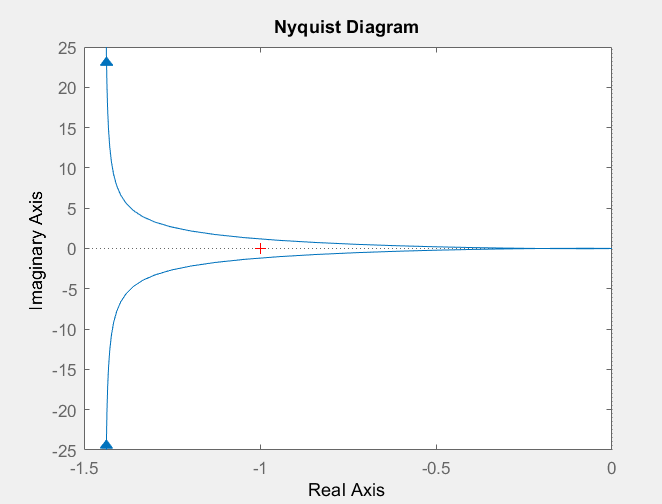Note: I need to do this by hand which is why I'm struggling. I'm only using MATLAB here to show the nyquist plot, and I was also using it to try and check my answer.
Edit: There are poles at -50, -10 and 0. So none on the RHS but 1 on the axis. I know this implies marginally stable, but I need to provide an explanation based on the Nyquist plot and I thought using crossovers and margins would be the best way to achieve this. (Since the pole explanation is easy to obtain just by looking at the trasfer function and doesn't relate to the Nyquist)
Using this Nyquist plot, I need to determine the stability of the system. I know that I can do this by comparing the phase and gain crossover frequencies, and gain and phase margins. The margins are calculated using the frequencies, so I need to find them to carry on.
- Phase crossover is the frequency when the plot crosses the negative real axis
- Gain crossover is the frequency when magnitude is 1
I need to be able to do this by referring to the Nyquist plot, but I'm not sure how to do this. MATLAB doesn't provide any frequency data at the crossover points as it only shows certain data when using the data tips, so how could I estimate the frequencies?




show margins. Also right click and selectgrid(it may clutter the plot). It will also help to magnify the Y axis to something likeylim([-2 2]). for better visibility. \$\endgroup\$allmargincommand to get exact[sic] values. "MATLAB doesn't provide any frequency data at the crossover points" Use more points to plot nyquist with something likenyquist(system, logspace(-2, 3, 10000000). \$\endgroup\$